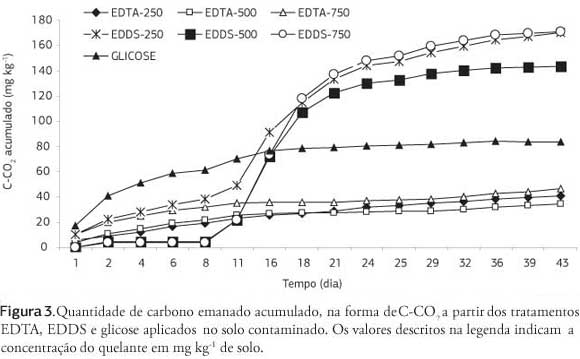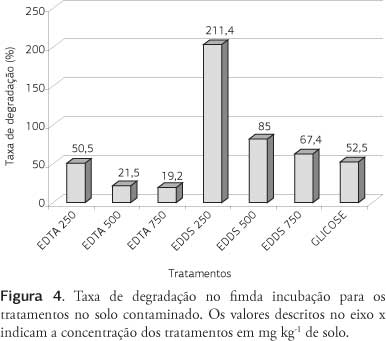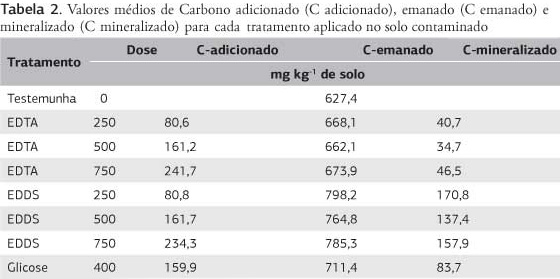This work aimed to evaluate the biodegradation of the chelant agents EDDS and EDTA through soil respiration. The chelant agents were applied in two soils, one was an Inceptisol contaminated with heavy metals and the other was a no contaminate Oxisol. Three doses of each chelant (250, 500 and 750 mg kg-1) and one dose of glucose were applied in both the soils tested, with three replicates. The chelant biodegradation was determined by quantifying the CO2 emitted during the experiment. The chemical kinetics equations used did not fit the data satisfactory for both chelants on the Oxisol, while a half-life of 12-16 days for EDDS and of 6 days for EDTA was obtained for the Inceptisol. During the half-life period, a chelant degradation of only 15% was observed. For the Oxisol, EDTA was responsible for the lowest biodegradation rate, next to zero, which occurred at lowest dose added. EDDS caused the highest biodegradation (135%) at the highest dose added to the soil. For the Inceptisol, the lowest biodegradation rate (19.2%) was observed with the highest dose of EDTA and the largest degradation rate (211.4%) with the EDDS at the lowest dose. Both the chelants degraded less with the increase of their respective doses, except with the application of the lowest dose of the EDDS (250 mg kg-1). However, the biodegradation of the EDDS continued greater than that verified with the EDTA application.
Biodegradation; chemical kinetics; degraded carbon; EDTA

 Degradability of chelant agent EDTA and EDDS after application on soil
Degradability of chelant agent EDTA and EDDS after application on soil





